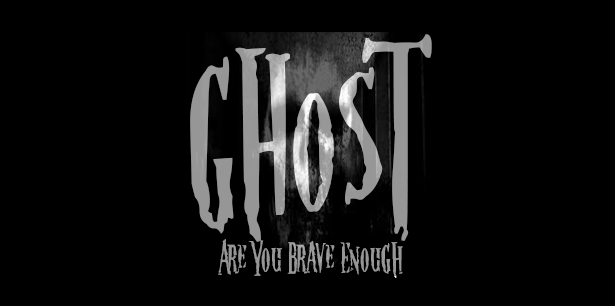
Amidst the mist-shrouded landscapes of West Sussex, a place of dark allure and chilling echoes
emerges from the annals of time. Arundel Castle, a relic of ages long past, stands as a testament to the lingering, haunting tendrils that weave through the tapestry of its history. In the realm where reality and the supernatural entwine, there exists a cacophony of whispers, restless specters, and the mournful echoes of bygone souls.
From the moment you step upon the hallowed grounds of Arundel Castle, the air itself seems to quiver with an otherworldly presence. Tales of phantoms and apparitions, whispered through the ages, reverberate through the very stones that comprise its ancient walls. Rick Hale, a seeker of the unexplainable, aptly captured the essence of this unsettling place.
Every nook and cranny, each dimly lit corridor, harbors the unsettling sensation that you are never truly alone. The very air seems to teem with unseen eyes, as if the ethereal remnants of lives long extinguished peer through the veil separating the living from the beyond. Such is the legacy of this cursed realm.

Across the United Kingdom, many castles bear witness to the shades of the departed, but none can boast the fervor and intensity of the phantoms that enshroud Arundel Castle. The ancestral stronghold of the Dukes of Norfolk has become a crucible of the supernatural, a place where time and existence merge into a chilling tableau of hauntings that defy the light of day.
The castle, a majestic example of medieval grandeur, stands like a sentinel of doom. But beneath its stately facade lies a history steeped in shadows and the residue of long-lost lives. A place of both beauty and terror, where ancient stones reverberate with the echoes of forgotten monarchs and sovereigns.
Once, Empress Tilda, a figure of long-forgotten history, graced the castle with her ephemeral presence as she pursued the crown. Henry II, driven by his obsessions, poured his essence into the very stone, restructuring the castle's essence. Richard the Lionheart himself once commanded from its throne room, an echo of his regal power now twisted into a tale of spectral anguish.
In these later days, as Arundel Castle opens its doors to the curious and the unsuspecting, the line between reality and the supernatural blurs further. Those who dare tread its haunted halls become witnesses to a symphony of apparitions, an ensemble of ghostly souls, trapped in a perpetual danse macabre.
Four spirits, tormented and restless, rise from the shadows to seize the attention of those who cross their path. The phantoms are not mere whispers in the night; they are embodiments of despair, twisted echoes of lives severed from the realm of the living.
Foremost among them is the ghost of the first Earl of Arundel, a specter ensnared within the castle's very foundation. This nobleman, architect of the castle's genesis, wanders the corridors with a watchful, jealous eye. His once-beautiful creation now a monument to his obsession, and his wrath knows no bounds. When offense is perceived, accidents and discord follow in his wake, a testament to the rage of a soul denied eternal rest.
Love, ever intertwined with sorrow, weaves its own strand into Arundel Castle's macabre tapestry. A tale of heartbreak and tragedy immortalized in the leap of a tormented soul from Hiornes Tower. The young woman's shattered dreams and anguished cries reverberate through time, her image climbing the very stairs she once used to escape her earthly anguish. A spectral echo of her demise, her presence imprinted upon the very stones that witnessed her fall.

The blue man, an enigmatic entity clad in an azure tunic, roams the castle's gloomy chambers. A cavalier bound to Charles I, he is forever suspended in a moment of quiet contemplation, a fragment of history that refuses to be forgotten. The vivid hue of his attire serves as a stark contrast to the melancholic shadows he navigates, a vivid reminder of his earthly loyalties.
Yet, the most harrowing presence of all is that of the servant boy, a figure eternally bound to his tormented fate. Abused and beaten by an overseer long lost to history, his form etches a spectral echo upon the castle's very core. In the early morning hours, the time of his fateful end, his apparition emerges, eternally scrubbing dishes in a frenzied dance of agony and submission.
And then, a tale of terror weaves through time, its tendrils reaching out from 1958. A young footman, ensnared in a fog that is as much supernatural as it is ethereal, stands at the castle's entrance. As the mists thicken, a figure emerges, shrouded in shadow and mystery. Long hair cascades, a grey tunic billows, and the air itself chills with malevolence. A demand for identity is met with silence, and as the figure inches closer, the heartbeats of fear pound like an ominous drum. A moment later, the specter dissipates, leaving naught but a lingering dread and a chilling certainty that something far beyond comprehension had just been witnessed.
Arundel Castle, an architectural marvel, stands as a testament to the human spirit's grandeur and its ultimate dissolution. But within its walls, a chorus of tormented souls refuses to be silenced. The phantoms of its past, bound by history's chains, persist in their mournful waltz. And as the night descends, the castle's very essence throbs with insidious energy, a reminder that the echoes of the past can never be fully quelled.











